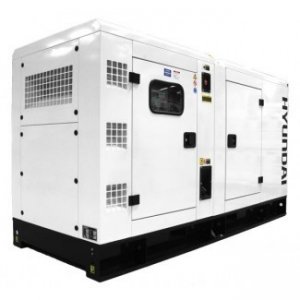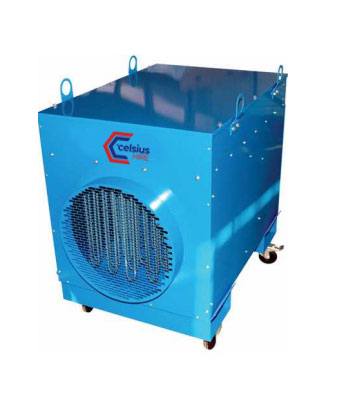So please give details and not a vague/flippant reply again.The same hazards as earthing any other part which does not have to be earthed.
You are using an out of date browser. It may not display this or other websites correctly.
You should upgrade or use an alternative browser.
You should upgrade or use an alternative browser.
Isolation Transformer - A discussion
- Thread starter AdrianUK
- Start date
It was neither flippant nor vague.
I am sure you know why earthing isolated parts is hazardous.
I am sure you know why earthing isolated parts is hazardous.
And I'm also aware of some of the regulations which you are trying to inform this community are dangerous...It was neither flippant nor vague.
I am sure you know why earthing isolated parts is hazardous.
So please once and for all give us details of these dangerous practices and regulations.
That is a good point, I was thinking about faults where live parts come into contact with "exposed conductive parts".Indeed.
Are you suggesting that a failure of the insulation which allows ones to touch both sides of a a floating supply (e.g. both terminals of a lampholder) constitutes more than a single fault?
Faults that directly expose conductive parts to touch are another matter. In an ideal world appliances would be designed such that directly exposed live parts could not occour in a single fault scenario. In practice though if sufficient "unreasonable force" is applied then something is going to give.
I have said before that I have observed that lighting seems to get a pass for practices that would be unacceptable in almost any other context. A standard pendant lampholder has live parts accessible without a tool and a standard light bulb has live parts protected only be a flimsy glass envelope.
Yes.Quite so - and, as I have said, I think a problem could only arise if one of the multiple faults had the effect of rendering the supply no longer floating.
So if a fault occurred between the secondary and the frame/case of the isolating transformer, and another fault occurred in the appliance, then if the appliance was not bonded to the power source then a dangerous touch voltage could result between the transformer and the appliance.
Similarly if the isolation transformer is feeding multiple appliances and their CPCs aren't connected to each other then if faults occour in multiple appliances at the same time then a hazardous voltage could develop between the cases of those appliances.
The two tend to go hand in hand though. If you bond the frame/case of the isolating transformer to earth (to protect against faults on the primary side) and you bond the frame/case of your isolating transformer to the exposed conductive parts on the secondary side (to protect against multiple faults on the secondary side) then you have indirectly connected the exposed conductive parts on the secondary side to earth.Indeed, but we're not talking about bonding different bits of metalwork to one another but, rather, of bonding the exposed-c-p of one (Class I) item to earth.
So if you don't bond the CPC of the appliance to the transformer frame/case you create a risk if there is a fault in the transformer and simultaneously a fault in the appliance. If you do bond the CPC of the appliance to the transformer you bring the risks associated with unnecessary earthing.
Which risk is greater? I suspect that depends on both the environment the equipment is being operated in and the quality of your inspection and testing regime.
I don't know what you have been reading, but I have said no such thing.And I'm also aware of some of the regulations which you are trying to inform this community are dangerous...
So please once and for all give us details of these dangerous practices and regulations.
If you are saying that there is a regulation stating that metal parts of an appliance should be connected to the earth of an installation from which they are separated, then please quote that regulation.
Quite so - but, as you imply in a subsequent post, that's merely a special case of the much more general truth that to 'unnecessarily connect to earth' any metal object in a building (and that includes door knobs, window frames and even spoons) which has an earth-referenced electrical installation will inevitably 'introduce potential hazards'.If one had a 240V battery (or generator I suppose) running a single appliance then surely connecting the appliance metal case to the house supply earth would only introduce hazards to the appliance and user?
Kind Regards, John
If one had a 240V battery (or generator I suppose) running a single appliance then surely connecting the appliance metal case to the house supply earth would only introduce hazards to the appliance and user?
Your answer to a straight question:What hazards?
I call that vague as you have not made any attempt to put any information forward and flippant as you have not treated it in a respectful manner.The same hazards as earthing any other part which does not have to be earthed.
So please give details and not a vague/flippant reply again.
I call this even more vague and certainly avoiding providing any requested information.It was neither flippant nor vague.
I am sure you know why earthing isolated parts is hazardous.
The reason I'm pursuing this is simple, I have quite frequently assisted with installing temporary generators to provide additional power in a building (sometimes for a single appliance like heating or chilling) and there is no way on this earth we'd have ever got away without bonding to the building earth. And now here you are telling me I know it's hazardous, contrary to the opinion of the IET.
Do you mean you bonded the heater or the generator?The reason I'm pursuing this is simple, I have quite frequently assisted with installing temporary generators to provide additional power in a building (sometimes for a single appliance like heating or chilling) and there is no way on this earth we'd have ever got away without bonding to the building earth. And now here you are telling me I know it's hazardous, contrary to the opinion of the IET.
I don't know the details of how everything is earthed.
What did the 'bonding' achieve or prevent?
The thread is about a string of lights supplied by an isolating transformer.
Substitute an electric shaver if you want - connect the shaver to the house earth or not?
However you converted it into powering a device from a battery or generator. OK it may have been me who moved the device indoors but I don't see that makes a difference.The thread is about a string of lights supplied by an isolating transformer.
And you still haven't explained the hazards you say will be introduced if the metal skin is connected to earth.
And now you are moving on another tangent by suggesting earthing a device which is not designed or intended to be earthed.Substitute an electric shaver if you want - connect the shaver to the house earth or not?
So, are you saying you would earth a device supplied by a battery?However you converted it into powering a device from a battery or generator. OK it may have been me who moved the device indoors but I don't see that makes a difference.
You have said that you have earthed - you said bonded - a device supplied by a generator but haven't answered my questions as to any specific reasons why?
Well, surely you must know - will become live in the event of a fault on the house supply, will provide a path to earth of negligible impedance if a person simultaneously touches a house live conductor, once earthed might require bonding etc - all the reasons for not earthing a spoon.And you still haven't explained the hazards you say will be introduced if the metal skin is connected to earth.
Not really.And now you are moving on another tangent by suggesting earthing a device which is not designed or intended to be earthed.
If you think items supplied by isolating transformers should be earthed then it must apply to a shaver.
I suspect that you may need to think more widely than that, and that that that "another natter" is probably more important than you imply.That is a good point, I was thinking about faults where live parts come into contact with "exposed conductive parts". .... Faults that directly expose conductive parts to touch are another matter.
The great majority of Class II items I own have no "exposed-conductive-parts" (and, in most cases, probably no significant NON-exposed conductive parts, in the 'barrier' sense we are talking about). The requirement for them to have "double or reinforced insulation" (in order to reduce the risk of electric shock) presumably therefore must relate to that "another matter" (i.e. reducing the risk of exposure of live parts), mustn't it?
As you say, it's down to swings and roundabouts (aka 'a risk assessment'). However, as I've said, if one is going to connect (by whatever process, directly or indirectly, and whatever one calls it) a point on the secondary of an isolation transformer to earth, then one will have negated most of the reasons for having an isolation transformer (for isolation) - so probably might as well do without it (for isolation)?So if you don't bond the CPC of the appliance to the transformer frame/case you create a risk if there is a fault in the transformer and simultaneously a fault in the appliance. If you do bond the CPC of the appliance to the transformer you bring the risks associated with unnecessary earthing.
Kind Regards, John
Just to remind the major part of this thread is all about adding a classI product to a floating supply. My comments are based around that scenario, not classII products.If you think items supplied by isolating transformers should be earthed then it must apply to a shaver.
I sincerely hope an electric shaver with a 2 plug is not a classI product.
So, are you saying you would earth a device supplied by a battery?
You have said that you have earthed - you said bonded - a device supplied by a generator but haven't answered my questions as to any specific reasons why?
Well, surely you must know - will become live in the event of a fault on the house supply, will provide a path to earth of negligible impedance if a person simultaneously touches a house live conductor, once earthed might require bonding etc - all the reasons for not earthing a spoon.
So the sort of thing I'm refering to in response to your question about generators is this sort of thing, as I get involved with installing 100KVA generators

and 80KW heaters:

Would it be wrong to make any sort of earthing/bonding arrangement to the buildings earth when the temp supply is/can be totally floating and the heater(s) are indoors?
DIYnot Local
Staff member
If you need to find a tradesperson to get your job done, please try our local search below, or if you are doing it yourself you can find suppliers local to you.
Select the supplier or trade you require, enter your location to begin your search.
Please select a service and enter a location to continue...
Are you a trade or supplier? You can create your listing free at DIYnot Local
Similar threads
- Replies
- 7
- Views
- 5K

